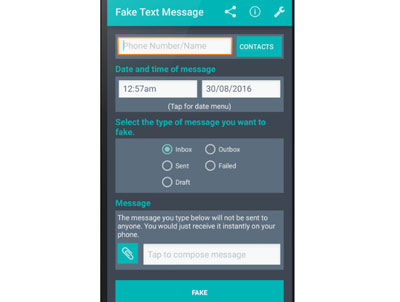
Fake a text code#
For example, the usual exclamation point "!" with code position U+0021 matches retroflex click symbol "ǃ" with code position U+01C3. Besides letters, homoglyphs can also be other symbols. For example, the Latin letter H (ha), the Cyrillic letter Н (en), and the Greek letter Η (eta) are practically indistinguishable from each other but they have different code points: Latin H has the code point U+0048, Cyrillic Н has the code point U+041D, and Greek Η has the code point U+0397. Although these letters are visually similar, they have different code points and are located in different Unicode blocks. These writing systems include graphemes that are visually very similar to English letters. In addition to the English alphabet, Unicode contains many other alphabets, such as Cyrillic, Turkish, and Arabic. As the Unicode character set is much larger than the ASCII character set, each ASCII symbol has many similar-looking Unicode symbols. Unfortunately, you can’t remove it in any way, so you just have to deal with it.This online utility spoofs regular Latin letters from the ASCII character set and replaces them with Unicode homoglyphs.

However, we have noticed one significant disadvantage: in the application, there is constant advertising that you need to close. You will also be able to edit messages that you have already written. In this way, the app lets you imitate any conversation with any phrases. Of course, this person will not be a real person, but what prevents you from putting a photo of a celebrity on your avatar, writing her name in the profile, and start communicating with a popular person? The coolest thing is that your interlocutor in this dialog can be anyone – you create a personality with which you will correspond. As a result of the work, you will get a fake dialogue, which you can take a picture of and send to anyone. If you are bored, have nothing to do, or just want to have fun, the application Fake Chat Conversation is perfect for this. It is designed to generate and create fake chats, with which you can play your friend or relative. Jokes, memes, and whole stories can be created in this app with ease.
Fake a text full#
The app supports the full range of emojis, which we are used to using during conversations and discussions. The app also lets you make fake calls: they will be displayed on the screenshot and in the dialog interface, but you won’t be able to listen to what you were saying. To imitate a real conversation, you can even add voice messages of a certain length – simply because your friends can’t listen to them. Of course, you’ll need to make some additions to your conversation partner’s profile beforehand – give him or her a name, set a profile photo, and so on. The app lets you share the result as soon as you finish working on the text of messages – just take a screenshot and you can send it to your friends in social networks or messengers. At the same time, you yourself control every detail of your conversation with a fake interlocutor, leading it from both sides. It is used exclusively to create fake dialogs and jokes with friends – they will actually think that you are communicating with someone.

It is another handy app to simulate a dialogue in WhatsApp with any person. All you have to do is take a screenshot and share it with your friends. The app can also make you a fake call if you urgently need to leave a meeting or play a trick on someone. Such complex and interesting fake dialogs are difficult to recognize, as most users have not even heard about such features. You can also create a group dialogue or a secret channel, which is real in the Telegram application itself. In order to start that, you will need to create a profile for your conversation partner.

The app lets you organize a perfect prank or make fun of someone. It completely imitates the visual part of the application, and the person who gets screenshots from you will not even notice the difference from the original application. This one lets you create fake messages in Telegram. Some of them imitate different social networks and messengers, others are simply similar to the classic message interface. Many of the messages that are designed to create fake messages and dialogs have a specific interface.


 0 kommentar(er)
0 kommentar(er)
